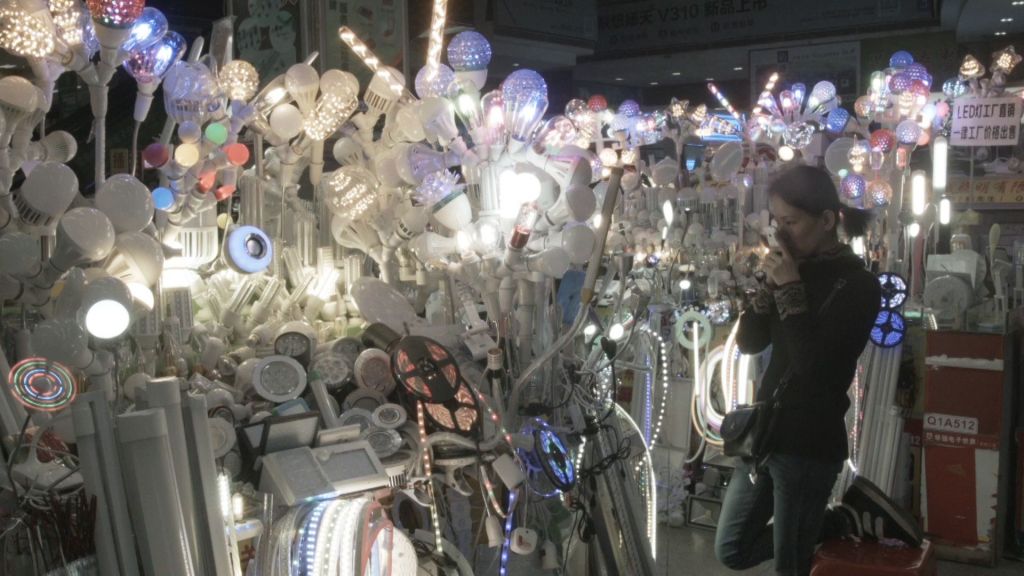
A new exhibition at Kazerne, featuring products taken from the chaotic Chinese manufacturing hub of Shenzhen, is setting out to challenge the way that we in the west think of design.
The work of Joseph Grima (the new head of Design Academy Eindhoven) and Martina Muzi, both of design research group Space Caviar, the ‘Born at Night’ exhibition brings together a range of artefacts – from bizarre light displays, to karaoke microphones, to custom mobile phones – all of which represent the dominant ‘bottom up approach’ of the Chinese marketplace.
“We didn’t go to collect objects”, says Muzi, speaking of the aim of the project. “We went there to study the ecosystem and when you spend seven months there you see how everything is interconnected. From the houses of the people, the market, the factories, all those things are interconnected together to create the products. They are examples of what the ecosystem is”.

“We were attracted by the news that Shenzhen was the place to be for innovation and design technology and the electronic market. Because electronics are so available at such a large scale, it means any designer or maker can just go there to make their dreams come true”.
As depicted in the product gallery’s accompanying 25-minute film, the environment that these products are forged in is a far cry from that seen in Eindhoven, or anywhere else in the west. The shear density of goods and materials in Shenzhen, together with the society’s lax attitude to intellectual property rights, has birthed an incredible copy-cat culture in the city, with manufacturers and independent traders working long into the night on entirely custom creations – often taking apart the work of others to build something better.

“There are more ways to design and to develop products”, says Kazerne Creative Director Annemoon Geurts of the message behind the exhibition. “We have to start a discussion on it because China now is getting ahead of us and we need to keep track with them. When we want to cope with their speed we need to do something. I think we can’t keep working as we are doing now”.
“We need to work together and maybe on one hand have some more trust in open source development. And on the other hand – for a city like Eindhoven, with probably the most IPs in the world, that’s a ‘no-go-area’ I can imagine”.
“So what are we going to do then to keep up with China’s speed? I think it’s a good discussion and we need to have it.”
Asked to describe what visitors can most expect to take away from the exhibition, Muzi emphasises the benefits of looking across the societal and cultural divide, and seeing how the design process itself is approached from an entirely different perspective.
“If you read the exhibition as a scenario where you can take out questions of how design can be connected with industries, you can question how the spaces where design is carried out are hyper-connected. And which are those spaces? The design studio? Maybe not.”
“What is nice to observe is that there are many different ways to design, and a different social structure that permits that – so it’s not so much whether you can apply this module to here, it’s more what you can learn from this module to enrich your design process, or change it a bit, or question it.”
“Instead of questioning the product itself, you question the process.”
The ‘Born at Night’ exhibition is open every day at Kazerne from noon til midnight, until 17th September 2018.
Photos: Kazerne; Space Caviar


